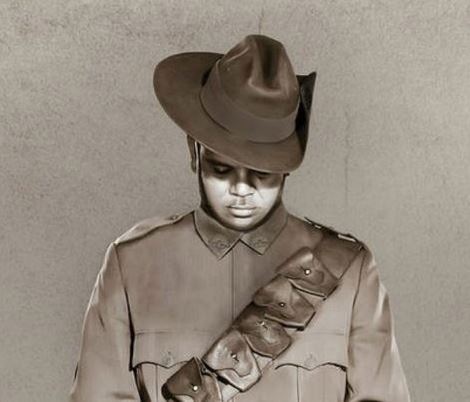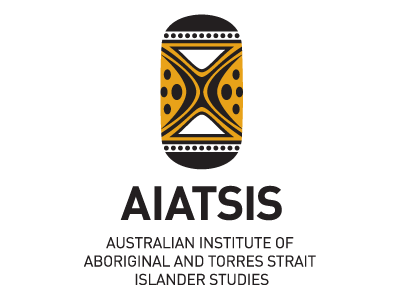AustLit
-
The poet Cec Fisher (1933-2009) wrote Black Anzac in commemoration of all Aboriginal servicemen who have fought for Australia. To read more of this poem, click on Out in the Cold: Australia’s Involvement in the Korean War. (Australian War Memorial website).
-
Aboriginal and Torres Strait Islander men and women have served Australia in war from the Boer War (1899-1902) to the present, exhibiting the same loyalty and patriotism as their European counterparts. They served and sacrificed their lives alongside fellow Australians but received limited recognition, especially in the wars before the late 1960s.
This trail explores and presents literary and other works, websites and research resources relating to Aboriginal and Torres Strait Islanders participating in the armed services.
Honour Roll
The Australian Institute of Aboriginal and Torres Strait Islander Studies (AIATSIS) has collated and Honour Roll of Indigenous Australians who served.
-
On Every Anzac Day
Acclaimed Australian songwriter John Schumann, in conjunction with the Australian Army, launched a song on 17 April 2015 commemorating the proud history of distinguished service by Indigenous Australians over the last 100 years.
https://www.youtube.com/embed/r3dArkmfy_Q -
At the beginning of the 20th Century many young men in the Australian colonies responded to the call from the Colonial Governments to enlist for the war in South Africa (Wallace, R. L. The Australians at the Boer War, 1976:1). It is estimated that 50 Indigenous Australians enlisted as bushman or trackers as, like non-Indigenous men, they responded to calls from Colonial Governments to voluntarily enlist to fight and show their loyalty to the Queen and the British Empire.
According to Chamberlain (2008:48) the ability to shoot and ride were essential attributes that the bushmen could contribute to encumber their Boer counterparts. Therefore recruitment of this class, for whom the rigours of military service was "not greater than their own outback jobs as boundary riders, drovers and stockmen"(Chamberlain 2008: 48). Hence, the term 'Bushmen' was used in several newspapers dating from 1899, to entice both Indigenous and non-Indigenous men who had 'bushman' qualities, as they were better equipped for the South African environment to enlist in the South African war. This notion of the Australian "bushmen" was noted in a letter written to Inspector Lenthall, of the Sydney Metropolitan Licensing District received by his brother, Claude Lenthall from Ladysmith, Uthukela District of KwaZulu-Natal. Claude quotes in his letter:
"I hope the Australian contingent will come. Each bushman is worth three soldiers, because they can take care of themselves as well as fight" ("Australian “Bushmen” Wanted", The Mercury, Monday 6 November 1899). This letter was published in several urban and rural newspapers throughout Australia at that time.
However, very few Aboriginal soldiers were recorded as serving in the Boer War, and barely a mention of their participation in newspapers. According to Peter Bakker, who for the past few years has been researching and documenting the contribution of Indigenous Australians in past conflicts, had recorded Private John Searle, an Aboriginal soldier who had served in the Boer War. Dale Kerwin from the Griffith University had identified other Indigenous soldiers, and believes that "all Indigenous people who served in the war be honoured". (ABC Online, May 2014)
-
My Grandfather’s Family Secrets : Unravelling Layers of Race and Belonging in an Australian Mixed-race Family by Kim Burke and Victoria Grieves
By tracing aspects of the life story of Kim Burke's grandfather Alexander Nickel Lewis and his father Matthew Lewis, this article aims to unravel the secrets kept in order to blur any reference to the true racial identity of family members.' (Source: abstract) (...more)See full AustLit entryAn essay by Kim Burke and Victoria Grieves in The Journal of the European Association for Studies of Australia.
-
 This image has been sourced from online.See full AustLit entry
This image has been sourced from online.See full AustLit entry'This book is an answer to very many and kindly-expressed requests that I should put into the form of a compact volume the record made during the period in which it was my privilege to accompany, as a Press correspondent, the troops who formed the First Australian Regiment in South Africa...' (Source: introduction)
(...more) -
Please be aware that this work contains words, terms or descriptions which may be culturally sensitive and are considered inappropriate today, but which reflect the period in which it was written.
-
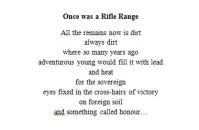 Once was a Rifle Range by Sam Wagan Watson, 2004.See full AustLit entry
Once was a Rifle Range by Sam Wagan Watson, 2004.See full AustLit entryThis poem explores the cost of war service on the children left behind. Before leaving for war, a father takes his son to a rifle range to shoot and talk about what the future might hold... (Source: Phillip Hall, Gathering Points : Australian Poetry : A Natural Selection. 2011)
(...more)First Line of poem: "all that remains now is dirt"
-
The Boer War Memorial website is dedicated to the men and women who participated in the Boer War from 10th October 1899 to the end of May 1902. Also see the site's record for Private John Searle.
-
In World War I it is estimated that over a 1000 Indigenous Australians served in ordinary units (Australian War Memorial website 2014) at a time when most Indigenous Australians could not vote, and were not counted in the census. Once they enlisted in the AIF they were treated as equals, however, paid the same as the non-Indigenous soldiers, and accepted without prejudice. But, when they were decommissioned and returned to their civilian lives, these ex-service men found that they were treated with the same prejudice and discrimination as before. Aboriginal and Torres Strait Islander people, including returned Indigenous soldiers were barred from some Returned and Services League (RSL) clubs.
-
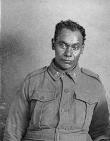 Douglas Grant (ca.1885-1951) this image has been sourced from Australian War Memorial (PO1692.001)See full AustLit entry
Douglas Grant (ca.1885-1951) this image has been sourced from Australian War Memorial (PO1692.001)See full AustLit entryDouglas Grant, Aboriginal draughtsman and soldier, was born in the Bellenden Ker Ranges, far north Queensland. In 1887, when Grant was an infant, his parents were said to have been killed in a tribal fight in Northern Queensland. In the article Pure Aboriginal Reared as White Man published in The Mail newspaper noted that Grant was saved from been murdered by an intoxicated Aboriginal trooper. However, Ramsland and Mooney suggest that it is more plausible that Grant's parents were killed by a punitive expedition of white settlers and native police launched from the colonial outpost of Cairns.
-
Textual records purchased from D. Grant, 1924. Part of the European War Collecting Project (also known as the Soldiers' Diaries Collection or War Diaries Collection), established by the Trustees of the Mitchell Library in 1918 (...more)See full AustLit entry
-
See full AustLit entry
This Bulletin is an abridged edition of Atherton Nye's paper which is held in the Eacham Historical Society's library.
(...more) -
 This image has been sourced from online.See full AustLit entry
This image has been sourced from online.See full AustLit entry'Norman Baird's mother was an Indigenous Australian and his father was native to Scotland. Baird learnt skills from both cultures: reading and writing, mining and hunting, English and Kuku Yalanji - skills that served him well from the jungles of Far North Queensland to the battlefields of Europe.
Ion L. Idriess wrote about his adventures with Norman Baird and his brother Charles Baird in Men of the Jungle.
-
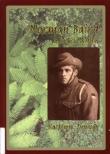 This image has been sourced from online.See full AustLit entry
This image has been sourced from online.See full AustLit entry'Norman Baird once wrote that he was prepared to advocate for the Kuku Yalanji people as long as there was 'a spark left within'.
As a young man Norman fought to defend the rights of Australians in World War I only to come home and fight for his own freedom and that of his children. As an old man and almost blind, Norman recorded an ancient language and preserved part of a unique Australian culture.
Norman's mother was an Indigenous Australian and his father was native to Scotland.
(...more) -
The Lock Family In World War One : How Service Records Contribute to Darug History by Philippa Scarlett
 This image has been sourced from online.See full AustLit entry
This image has been sourced from online.See full AustLit entry'The Lock Family in World War One by Philippa Scarlett has been published by Indigenous Histories to coincide with Anzac Day 2008.
This book shows the contribution World War I service records make to Lock and Darug history. It includes brief summaries of the records of Lock men and members of their extended family who volunteered for service in World War I as well as photographs and extracts from service records.
Additional family names include Morley, Barber, Bolton, White, Castles, Anolock, Punton, Smith, Sims and Everingham .
(...more) -
The boys from Barambah : the story of the black diggers of Barambah-Cherbourg of World War 1 compiled and written by Mark Newman, Sally Lawrence and Philippa Scarlett with assistance from Tanya Schneider and the ANZAC 100 Boys from Barambah Committee.
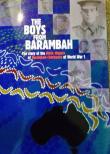 This image has been sourced from online.See full AustLit entry
This image has been sourced from online.See full AustLit entry'The centenary anniversary of World War 1 gives us the opportunity to reflect and honour all Australian servicemen and women, and finally give our Indigenous servicemen the recognition they deserve. The essence of the Boys from Barambah project is to help our community (in Cherbourg and the South Burnett) and the wider Australian community to remember and celebrate those Barambah/Cherbourg men who served in WW1, and acknowledge the commitment and strengths they showed to overcome the difficulties encountered.
(...more) -
They Served With Honour : Untold Stories of Western Australian Aboriginal Servicemen at Gallipoli by Department of Aboriginal Affairs. Community Development Directorate
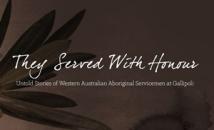 Image courtesy of publisher's website.See full AustLit entry
Image courtesy of publisher's website.See full AustLit entry'Over the last decade, there has been a growing interest in Australia about the contribution made by Aboriginal men and women in times of war. Whilst
their involvement in our nation’s more recent conflicts is featured in many contemporary publications, little is known about Aboriginal service in World War I (1914-
1918), and even less about their role at Gallipoli. It is estimated around fifty Aboriginal men fought during this Campaign. The stories of those who served have
to a large extent remained untold or, in some cases, known only to the immediate families.
(...more) -
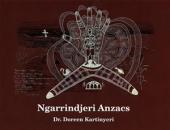 This image has been sourced from online.See full AustLit entry
This image has been sourced from online.See full AustLit entry'Record of 21 Ngarrindjeri men from Raukkan (Point McLeay Mission) and the lower Murray River who volunteered for service in World War I. Includes war service, photographs and some family background.' (Source: AIATSIS website)
(...more) -
Aboriginal and Torres Strait Islander Volunteers for the AIF : The Indigenous Response to World War One by Philippa Scarlett
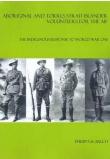 This image has been sourced from WebThis work contains small stories about Aboriginal and Torres Strait Islander people who volunteered for the AIF. Also includes a referenced alphabetical listing of men of Aboriginal and Torres Strait Islander heritage who volunteered for the first AIF. (...more)See full AustLit entry
This image has been sourced from WebThis work contains small stories about Aboriginal and Torres Strait Islander people who volunteered for the AIF. Also includes a referenced alphabetical listing of men of Aboriginal and Torres Strait Islander heritage who volunteered for the first AIF. (...more)See full AustLit entry -
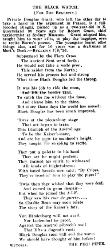 Source: The Bulletin, 21 September, 1916, p. 24.See full AustLit entry
Source: The Bulletin, 21 September, 1916, p. 24.See full AustLit entryA poem about Aboriginal soldier Douglas Grant, who was a POW in World War I.
(...more)First Line of Poem: "Subpoenaed by the Fiery Cross"
Please be aware that this work contains words, terms and descriptions which may be culturally sensitive and are considered inappropriate today, but which reflect the period in which it was written.
-
 This image has been sourced from online.See full AustLit entry
This image has been sourced from online.See full AustLit entry'Archie Weller clearly shows himself as a poet for the underdog feeling a misfit at his boarding school and after leaving, immersing himself in Aboriginality absorbing the lifestyle and legends of a wide circle of Aboriginal friends from all walks of life. He explains his poems as important moments in his life.' (Source: Booktopia website)
(...more) -
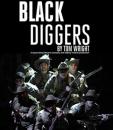 This image has been sourced from online.See full AustLit entry
This image has been sourced from online.See full AustLit entry'One hundred years ago, in 1914, a bullet from an assassin’s gun in Sarajevo sparked a war that ignited the globe. Patriotic young men all over the world lined up to join the fight – including hundreds of Indigenous Australians.
Shunned and downtrodden in their own country – and in fact banned by their own government from serving in the military – Aboriginal men stepped up to enlist. Undaunted, these bold souls took up arms to defend the free world in its time of greatest need. For them, facing the horror of war on a Gallipoli beach was an escape from the shackles of racism at home, at a time when Aboriginal people stood by, segregated, unable to vote, unable to act as their children were ripped from them.
(...more) -
Trailer for Black Diggers to be performed at Canberra Theatre Centre 2015
In this trailer see Director Wesley Enoch talk about Black Diggers, the telling of the stories about Indigenous soldiers, and their participation in World War I.
//www.youtube-nocookie.com/embed/OJostEoV-OM -
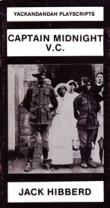 This image has been sourced from online.See full AustLit entry
This image has been sourced from online.See full AustLit entry'The play narrates the revolutionary feats and achievements of one Captain Midnight VC (he won the VC in World War I), the bastard son of an Indigenous woman and English peer. Politically charismatic, he eventually leads an uprising of blacks (aided by black brothers from Africa and the USA) which compels the government to eject all whites from Tasmania and give it back to the Aborigines, as `Trugininiland’.' - Jack Hibberd
(...more) -
Aboriginal and Torres Strait Islander were allowed to enlist at the onset of the Second World War. But in 1940 a ban was imposed on the enlistment of Indigenous Australians. This was partly due to the idea that 'White Australians would object to serving with them.' (AWM website 2014). And the fear that once Japan had entered the war Indigenous contact with the Japanese would motivate them to give assistance to the enemy. Despite the ban on enlistment, a number of Aboriginal and Torres Strait Islander volunteers either claimed another nationality or surrendered their Aboriginality.
-
See full AustLit entry
Reg Saunders was born on the Framlingham Aboriginal Reserve in the district of Portland in Victoria, the eldest son of Wannan and Chris Saunders, an itinerant worker. In 1924, Saunders's mother died giving birth to a third child. Following his wife's wishes, Chris Saunders declined the advice to have his sons adopted, and instead placed them in the care of their maternal grandparents at Lake Condah Reserve. There Chris Saunders was able to spend time with his sons between jobs.
Saunders achieved academic success at the one-teacher school at Lake Condah and was offered further education at Hamilton High School and later by correspondence at Scots College.
-
 This image has been sourced from online.See full AustLit entry
This image has been sourced from online.See full AustLit entry'Biography of Reginald Walter Saunders, Captain in the A.I.F., reared at Lake Condah Mission. Reg Saunders served in the Middle East, Greece, Crete, New Guinea and Korea. Harry Gordon, the author, was a war correspondent in Korea with Saunders. He writes of Saunders’ war experiences and civilian life back home.' (Source: AIATSIS website)
(...more) -
 This image has been sourced from online.See full AustLit entry
This image has been sourced from online.See full AustLit entry'Discusses Torres Strait Islander women's experiences during the Pacific War, 1942 to 1945. Includes a look at pre-war life in the Torres Strait living under the Torres Strait Islander Act of 1939. Women and children of the inner islands were evacuated to mainland Australia, residents of the out islands were not evacuated. Describes the bombing of Nurapai (Horn island), recruiting men for war service, account of recruiting men at gunpoint at Masig. Battle of the Coral Sea. Discusses living conditions during the war, receipt of child endowment in 1941 and withholding of moneys by the Department.
(...more) -
Fighters from the Fringe : Aborigines and Torres Strait Islanders Recall the Second World War compiled by Robert A. Hall (Interviewer)
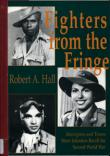 This image has been sourced from online.This book reveals the 'experiences of six Australian Aboriginal and Torres Strait Islander people who served their country during the Second World War. Oodgeroo Noonuccal was a wireless operator whose brothers were prisoners of war. Reg Saunders served in Greece and New Guinea, as the first Aboriginal officer in the Australian Army, and later in Korea. Leonard Waters trained and served as the first Aboriginal fighter pilot. Charles Mene, a Torres Strait Islander, served throughout the war and was awarded the Military Medal in the Korean War. (...more)See full AustLit entry
This image has been sourced from online.This book reveals the 'experiences of six Australian Aboriginal and Torres Strait Islander people who served their country during the Second World War. Oodgeroo Noonuccal was a wireless operator whose brothers were prisoners of war. Reg Saunders served in Greece and New Guinea, as the first Aboriginal officer in the Australian Army, and later in Korea. Leonard Waters trained and served as the first Aboriginal fighter pilot. Charles Mene, a Torres Strait Islander, served throughout the war and was awarded the Military Medal in the Korean War. (...more)See full AustLit entry -
The Black Diggers : Aborigines and Torres Strait Islanders in the Second World War by Robert A. Hall
 This image has been sourced from online.' The Black Diggers explores the war effort of Aboriginal and Islander Australians during the Second World War and the reasons their contribution has gone unrecognised for so long.' This book is a comprehensive account of the work of Indigenous Australians 'during the years when their country faced the Japanese threat. Despite suspicion and prejudice they earned a place within the digger legend'. (Source: Back cover, Aboriginal Studies Press, 1997 edition) (...more)See full AustLit entry
This image has been sourced from online.' The Black Diggers explores the war effort of Aboriginal and Islander Australians during the Second World War and the reasons their contribution has gone unrecognised for so long.' This book is a comprehensive account of the work of Indigenous Australians 'during the years when their country faced the Japanese threat. Despite suspicion and prejudice they earned a place within the digger legend'. (Source: Back cover, Aboriginal Studies Press, 1997 edition) (...more)See full AustLit entry -
Horn Island 1939 - 1945 : a Record of the Defence of Horn Island during World War Two by Canessa Seekee and Arthur Liberty Seekee
 This image has been sourced from AIATSIS websiteSee full AustLit entry
This image has been sourced from AIATSIS websiteSee full AustLit entry'Detailed history of the defence of Horn Island during World War II; chapter on the Australian Army Units on Horn Island includes the Torres Strait Light Infantry Battalion and the impact on social life in the villages because of men's participation in the Battalion. Rates of pay for Torres Strait soldiers. Includes text of some Torres Strait Island songs and nominal rolls listing Murray Islanders, and people from Aurukun, Weipa, Lockhart , Cowal Creek, Yam Island, Yorke island, Naghir & Badu Islands, Coconut Island, Thursday Island, Saibai Island, Dauan Island, Poid, Kubin, Moa Islands, St Paul's Mission, Moa Island, Badu Island, Mabuiag Island, Darnley Island.
(...more) -
N.T.S.R.U., 1941-1943 : Northern Territory Special Reconnaissance Unit by Donald Thomson, Michael John Christie, Charles Nawunggurr Yunupingu, Stephen David Fox and the Yirrkala Literature Production Centre
 This image has been sourced from online.See full AustLit entry
This image has been sourced from online.See full AustLit entry'The history of a small and not very well known Australian Special Forces unit - the Northern Territory Special Reconnaissance Unit .
Squadron Leader Donald Ferguson Thomson was seconded from the RAAF to the Australian Army to train a special task force of about fifty tribal Yolngu men from East Arnhem Land to defend the coastline of northern Australia from Japanese attack during World War 2.
They were called the Northern Territory Special Reconnaissance Unit (NTSRU). They covered the territory north of the area patrolled by the Knackeroos.
(...more) -
 Victor 'Mighty' Nelson by Valerie P. ReadSee full AustLit entry
Victor 'Mighty' Nelson by Valerie P. ReadSee full AustLit entryThis poem is about Aboriginal World War II veteran.
(...more)First line of poem: "He served in far North Africa, New Guinea, Tarakan,"
Author's note: (a WWII veteran)
-
See full AustLit entry
During World War Two, Sapper Bert Beros wrote this poem about one of his comrades, Aboriginal soldier, Private West, who attacked a Japanese machine-gun pit single handed. (Too Dark For the Light Horse, 1994) This poem was one of the inspirations behind the inaugural Coloured Diggers March.
(...more)First line of poem: "He came and joined the"
-
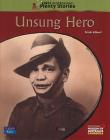 This image has been sourced from online.See full AustLit entry
This image has been sourced from online.See full AustLit entry'Written for upper primary students this book tells the story of Eddie Albert who joined the Army in 1940, enlisting in North Queensland. Eddie gives an account of a battle he was in, was captured by the Germans and taken to a number of prison camps in Italy. He returned home safely in 1945, married and had children and was reunited with his brother. Eddie’s story is contextualised in the social history of the time, both before and after the war, including the story of his removal from his mother.
(...more) -
Torres Strait at War : A Recollection of Wartime Experiences by Thursday Island State High School and the New Zealand. Dept. of Industries and Commerce .
 This image has been sourced from online.See full AustLit entry
This image has been sourced from online.See full AustLit entry'History of the Torres Strait Islands during World War II. Presents reminiscences of Torres Strait Islanders from the war years. Servicemen; air raids on Horn Island; nominal roll of Torres Strait and Aboriginal ex-servicemen - Torres Strait Defence Force; Merauke; Torres Strait Light Infantry Battalion; back pay issues...' (Source: AIATSIS website)
(...more) -
Nganapurru Djama Gundarak by Marrnyula Wunungmurra and Guringgirrpa Yunupingu, story told by Balun Yunupingu and translated by Raymatja Mununggiritj (In Aboriginal Gumatj and English languages)
 This image has been sourced from online.See full AustLit entry
This image has been sourced from online.See full AustLit entry'Story of Six Yolngu men who were recruited to build the Gove air strip during WWII.' (Source: AIATSIS website)
(...more) -
Kuli Palunyan Luwarnani Kartiyawarnilu by Doris Laurel Jayirtna and Illustrated Yangkana Laurel (In Aboriginal Walmajarri and English languages)
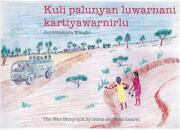 Image courtesy of the State Library of Western AustraliaSee full AustLit entry
Image courtesy of the State Library of Western AustraliaSee full AustLit entryA World War Two story about two Japanese pilots who had landed their plane in a remote area in the Northern Territory, with fatal consequences.
(...more) -
Nganapurru Malng Marama Balandanha Runu Nguru Baman Edited by Raymattja Mununggurritj ; Lalambarri Yunupingu ; Wurrmitjin Mununggurr; Illustrated by Mawalan Marika and story old by Wandjuk Marika (In Aboriginal Gumatj and English languages)
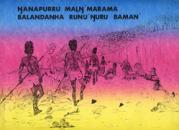 This image has been sourced from online.See full AustLit entry
This image has been sourced from online.See full AustLit entry'Story about assisting an American pilot whose plane had crashed find his way back from Dhambaliya to Yirrkala. Told in Gumatj with an English summary. Also includes information in English from other sources about the pilot, Flight Lt Clarence Sandford who had lost his radio while pursuing Japanese bombers with other American planes, ran out of petrol and ejected himself into the sea about three miles from Bremmer Island.' (Source: AIATSIS website)
(...more) -
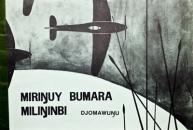 This image has been sourced from LAAL websiteSee full AustLit entry
This image has been sourced from LAAL websiteSee full AustLit entry'I'm going to tell a story about the war, when...enemies came here; because none of us really know this story, older people or young ones...'
(...more) -
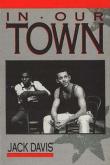 See full AustLit entry
See full AustLit entryThis play is set in a country town, the story centres on the return of an Aboriginal soldier after World War II and the rejection he experiences by the white community.
(...more) -
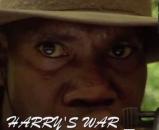 This image has been sourced from online.See full AustLit entry
This image has been sourced from online.See full AustLit entryHarry Saunders's decision to join the army during the Second World War and fight for his country is largely motivated by his desire to fight for the rights of Indigenous people. Harry hopes that in fighting alongside the white citizens of Australia, he will help Indigenous people to eventually win citizenship. Prejudice and racism, however, are not so easily overcome, as Harry soon finds out.
(Source: Australian Screen.)
(...more) -
A Small Clip from Harry's War by Richard Frankland
Warning: Aboriginal and Torres Strait Islander viewers are warned that this trailer contains images and voices of deceased persons.
//www.youtube-nocookie.com/embed/Walu2BI20T8 -
Also see Australian Screen for Video clip of Harry's War (2000) with clip description and Curator's notes by Romaine Moreton.
-
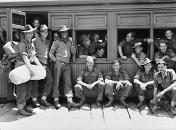 This image has been sourced from online.See full AustLit entry
This image has been sourced from online.See full AustLit entry'The story of Reg Saunders MBE (1920-1990) - the Australian army's first Aboriginal Officer is a story of courage, humility and huge adventure. This film tells Saunders' life story - from growing up in Lake Condah Mission in western Victoria to leaving Melbourne on a troopship as a 19-year-old Digger in the opening days of WWII. It tells of his time in Crete in 1941 - fighting the Nazis, and then going on-the-run - an extraordinary chapter in his life, when, with the help of mountain villagers, he evaded capture for a year.
(...more) -
Odyssey of a Warrior is still in development, to see an extended trailer go to the Vimeo website. (vimeo.com)
-
The post World War II period saw the demands of war gone, and the Australian 'army re-imposed its restriction on enlistment' (AWM website 2014). In 1949, with the changing attitudes, restrictions based on race were abolished, and since then Aboriginal and Torres Strait Islanders have serviced in all conflicts in which Australia has participated, including the Korean War (1950 - 1953), Vietnam War (1962-1975), Iraq - The First Gulf War (1990-1991), and Afgahanistan (2001-present). See the Australian War Memorial website for more information.
-
Forever Warriors : This Book Honours All Western Australian Indigenous Men & Women Who Served in All Conflicts by Jan James
 This image has been sourced from online.See full AustLit entry
This image has been sourced from online.See full AustLit entry'Jan ‘Kabarli’ James’ book Forever Warriors published in 2011 contains names, biographical information and in most cases photographs of Western Australian Indigenous servicemen from all conflicts. It is a comprehensive statement based on over 30 years of genealogical research into the Aboriginal people of Western Australia. Although initially unaware of Indigenous war service it was during the course of her research that Jan realised that Aboriginal men and women had also served their country.
(...more) -
 This image has been sourced from online.See full AustLit entry
This image has been sourced from online.See full AustLit entry'Honour roll of Aboriginal servicemen from central Australia for service in World War I and II, Vietnam, Korea and other campaigns; includes testimonies from eight servicemen.' (Source: AIATSIS website)
(...more) -
 This image has been sourced from WebSee full AustLit entry
This image has been sourced from WebSee full AustLit entry'In 200 years since colonisation soldiers from this country have distinguished themselves in eight campaigns on foreign soils. Australian Aborigines have served an active role in each of these wars, though their efforts to sign-up were often resisted by official policy that saw them as unsuitable because of their racial origin. After the event Aboriginal contribution was rarely recognised by historians or brought to the attention of the public.'
'Through the erection of the war memorial the people of Yugambeh Aboriginal group pay tribute to the many Aboriginal service men and women who have served this country'.
(...more) -
 This image has been sourced from online.See full AustLit entry
This image has been sourced from online.See full AustLit entry'Without the generosity and encouragement of so many Koories this book would not have been possible. We travelled together recording stories from Aboriginal men and women who have served Australia in times of war' (from the authors).
'The stories are of Victorian Aboriginal people’s experiences in World War One, World War Two, Korea and Vietnam. There is a section on the soldiers of Lake Tyers Mission and information about the war work at Cummeragunga Mission. Also included is a list of Aboriginal servicemen and women provided to the authors.
(...more) -
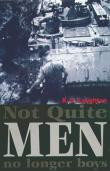 This image has been sourced from online.See full AustLit entry
This image has been sourced from online.See full AustLit entry'Kenny was barely nineteen years old, a wide-eyed Aboriginal kid from the bush, when he left Australia for a tour of duty in Vietnam. From the fleshpots of Saigon to the ‘sharp end’, clearing mines at Nu Dat, there was a lot to learn for a young man in a strange country, fighting a murky, confusing war. Not Quite Men, no longer boys is the gritty moving story of Kenny’s education in life and death – and the kinds of friendship that last a lifetime.' (Source: IAD Press website)
(...more) -
Pikayanku tjutupungkulanytja Vietnamala written and illustrated by Donny Robinson (In Aboriginal Ngaanyatjarra and English languages)
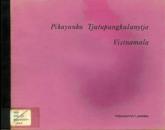 This image has been sourced from online.See full AustLit entry
This image has been sourced from online.See full AustLit entryStory about the Vietnam War in Ngaanyatjarra language with English translation.
(...more) -
 This image has been sourced from online.See full AustLit entry
This image has been sourced from online.See full AustLit entry'The Forgotten is a film about Aboriginal and Torres Strait Islander servicemen and women who have served, fought and died for their country in all of the wars and peace-keeping missions that the Australian armed forces were involved in the 20th century. Glen Stasiuk was inspired by his family's own history and the respect he felt for the Anzac black diggers. Consequently, The Forgotten contains a personal story about four Nyoongar brothers from the South-West of Western Australia, one of whom is acknowledged as the first Aboriginal Soldier to receive a military medal in the First World War.
(...more) -
See NITV: The Campfire website for The Forgotten trailer.
-
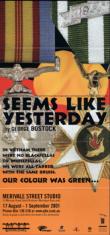 This image has been sourced from online.See full AustLit entry
This image has been sourced from online.See full AustLit entry'Seems Like Yesterday is the story of a troop of Australian soldiers in Vietnam whose security in identity and sense of right as Australians is thrown upside down with the arrival of a new recruit who happens to be an Aboriginal...' (Source: Lynette Hughes 2001)
(...more) -
 Source: screen cap, promotional trailer'Gail, Cynthia, Julie and Kay are sexy, black, young and talented - and they've never set foot outside Australia. Until, in the chaos of 1968, they're plucked from the obscurity of a remote Aboriginal mission, branded as Australia's answer to The Supremes, and - grasping the chance of a lifetime - dropped into the jungles of Vietnam to entertain the troops.' Source: www.encoremagazine.com.au/ (Sighted 26/09/2011). (...more)See full AustLit entry
Source: screen cap, promotional trailer'Gail, Cynthia, Julie and Kay are sexy, black, young and talented - and they've never set foot outside Australia. Until, in the chaos of 1968, they're plucked from the obscurity of a remote Aboriginal mission, branded as Australia's answer to The Supremes, and - grasping the chance of a lifetime - dropped into the jungles of Vietnam to entertain the troops.' Source: www.encoremagazine.com.au/ (Sighted 26/09/2011). (...more)See full AustLit entry -
The Real Sapphires broadcasted on Today Tonight, Channel Seven
See Laurel Robinson, Beverly Briggs and Naomi Mayers the three original members of the Sapphires. The first popular Aboriginal all-female group behind the story that inspired the highest grossing Australian film of 2012, The Sapphires. (Story and film from Today Tonight, channel Seven).
//www.youtube-nocookie.com/embed/BGJCb2F-EVY -
Australian War Memorial
'The Australian War Memorial combines a shrine, a world-class museum, and an extensive archive. Its purpose is to commemorate the sacrifice of those Australians who have died in war. Its mission is to assist Australians to remember, interpret and understand the Australian experience of war and its enduring impact on Australian society.' (Australian War Memorial website)
The website contains a large collection that contains items from colonial conflicts to the present day. The collection was founded by Charles Bean and John Treloar who began collecting records including unit war diaries and relics (material evidence of conflict) during the First World War.
Search the Australian War Memorial Collection for articles, books, art, photographs, films and Aboriginal and Torres Strait Islander soldiers. Click on Australian War Memorial-Collection. To find out more click on Indigenous Australian Servicemen
Read about Captain Reg Saunders MBE (who was the first Indigenous Australian to be commissioned as an officer into the Australian Army in 1945, and served in Korea as an Officer Commanding.) and Aboriginal poet and writer Cecil Fisher who fought in Korea, It was his poem Black Anzac that draws on his experiences in the Korean war. Click Out in the Cold: Australia's Involvement in the Korean War
-
AIATSIS (Australian Institute of Aboriginal and Torres Strait Islander Studies)
AIATSIS is the national research and collecting institution for information and research about the cultures and societies of Aboriginal and Torres Strait Islander peoples, past and present. See their collection Indigenous Australians at War by Garth O'Connell. Find out about Indigenous involvement in the Light Horse Units during the Boer War, click on Rare photo of Indigenous Involvement in the Boer War: 4th Contingent, Queensland Imperial Bushmen.
See also the reading list for books that discuss Indigenous women who made significant contributions during both peacetime and war. Click Indigenous Australians at War: Women and War.
-
 This image has been sourced from online.See full AustLit entry
This image has been sourced from online.See full AustLit entry'Investigates the role of the Army’s Yolngu Northern Territory Special Reconnaissance Unit , who were recruited by Donald Thomson in 1941, with assistance from Raiwalla from western Arnhem Land and Kapiu from the Torres Strait.' (Source: AIATSIS website)
(...more) -
See full AustLit entry
'Connecting Spirits is a project that involves students travelling to the World War I battlefields, cemeteries and memorials of France and Belgium to learn first hand the role that Australians played in the battles of the Great War and to understand the sacrifices made. While there, the students commemorate individual soldiers from their own families and communities.' (Source: Connecting Spirits website)
(...more) -
Too Dark for the Light Horse : Aboriginal & Torres Strait Islander People in the Defence Forces : Resource Book : Memorial Box 03 written by Judy Crabb, Trevor Geary, Suzy Nunes and Gary Oakley
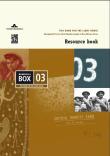 This image has been sourced from online.See full AustLit entry
This image has been sourced from online.See full AustLit entry'Educational material developed for the Museum-in-a-box scheme; includes case studies from the First, Second and Vietnam wars; documents; background historical material and a list of suggested activities for students; case studies profile; William Reginald Rawlings, Douglas Grant, Reginald Saunders, Leonard Waters, Charles Mene, Don Beale, Gary Oakley; suitable for secondary students.' (Source: TROVE)
(...more) -
Indigenous Histories is a Canberra based Australian publisher with a focus on Indigenous history, art and culture.
You might be interested in...



